Almost every garden sector of the amateur of flowers can be seen a lily whip, and it is not surprising: the flower is unpretentious enough, has a large color variety (you can choose to each garden), and the smell of this plant will not leave anyone indifferent. The bush lilies need care, the ability to contact them, knowledge of suitable soil for them, the right watering and reproduction. Today's article is devoted to bush lilies and competent care for them.
Selection of a plot for bush lilies
Lilies need a well loose, moderately dry soil, without weeds. Lily busty flowers do not tolerate large humidity of soil and water stagnation. Many bush asian, as well as tubular lilies, it is customary to grow in an open area, but a small shadow will not harm them. It is impossible to plant lilies near the trees where the soil can be dried.
Soil preparation for bush lilies
Prepare the soil for planting bush lilies should be started in advance, as the plant applies to many years and will be on its permanent place under five years. On the heavy ground, in the place of instillation of the bulbs, interfere with sand or peat. It is also recommended not to forget that the abundance of organic Vitamins of the Earth can cause accelerated growth of the above-ground part to the detriment of the formation of flowering stronger bulbs, reduces portability in cold times, resistance to diseases, worsens flowering.
The fertilizer of the soil is timed to the main preset processing. With plowing or peopling, along with natural organic, mineral fertilizers (phosphoric, nitrogen and potash) are introduced.
Landing bush lilies
- Landing a bush lily to spring should be done in advance - that is, at the beginning of the appearance of shoots, young stems in the spring are still not strong enough and can easily break.
- If the bulbs during a couple of days need to be preserved, then they are put in place where they will be protected from overheating, shifting wet moss, sand or ordinary earth.
- The loins ready for landing inspect, chipped bad, remove the shut-off scales, shorten the long living roots, then the lows are routing in the solution.
- The depth of planting is associated with the size of your bulb, type and mechanical soil composition. On sandy soils landing deeper, on clay-smallest.
- Sit into the wells to a depth several times more than the height of the lows, counting from the top of the bowl to the surface of the soil.
- The main positive factor when landing and transplanting the bush lilies is the integrity of the lows and the roots in the fresh condition.
- After landing, the soil is mounted with peat or humus.
- The bulbs are planted with the autumn and spring season. For most bush lilies, the best option will be autumn fit. The best time for landing is September month. If warm autumn - lows have time to root. If frosts are overtaken early, it should be covered with insulating material.
- There are a pair of ways to determine the landing depth, select the appropriate for you.
1 option. The depth of planting is determined by the size of the lows itself, the group to which the lily variety belongs.
Option 2. The depth of the wells should be equal to the height of the bowl multiplied by three or four, that is, 2 heights of the bulbs should be over the top of the bowl to the surface of the soil.
3 option. Sale a bowl inland for ten cm. From the top of a bowl to the surface of the soil. The bulbs, planted not deeply, deepen on the desired depth.
When the landing is ready, the earth is mured with peat crumbs or other material.
Depth of planting on bulbs of bush lilies
First of all, before landing the soil, you must have to move. The bulbs need to carefully examine, remove the dried roots, fall asleep the cuts with crowded charcoal, because the bulbs and roots of the lilies do not have protective cover scales and suffer from peasants. Dried bulbs, before starting landing, it is necessary to lay a damp cloth in order to absorb moisture.
The depth of the planting of the bulbs can be determined by several features: the size of the bulbs, the formation of stroke roots, the mechanical composition of the soil, etc. As a rule, the bulbs are planted on this depth so that the depth is three times superior to the bulbs.
The exception will be some species that form a rosette of surface leaves: white-white bush lily, Lilia Catsby, as well as Lilia X terracotta. The data of the bulbs are made to plant a depth of two or three cm. The main thing is that a part of the bowls be placed almost at the surface of the soil. Lobs Lilies with big colorless shoots: Lilia Kuneda, Lilia Hanson, Lily Willott, Lilia Henry and other tall varieties usually planted much deeper than accepted. Lobs lows are far deeper than the roots in the form of stems (stem roots).
The best option is considered a deeper planting of bulbs: the abundance of moisture is at a depth; in the fall at the depth of above the temperature, so the roots grow longer; From spring frosts, the fact that closer to the spring period is saved, in deeper onion, the growth of flower escape is significantly slowed down.
In order to determine the depth of planting bulbs, the structure of the soil should be taken into account, its mechanical composition. On soils with sandy soil, the bulbs need to plant more deeply. Immediately before the landing, it will not be superfluous to pour a handful of washed river sand under the bulb in order to increase the level of protection against insect pests and diseases that can overtake the plants. Then there is a bulb and straighten the roots. To determine the correct distance between the bulbs when landing, look at the power and height of the plants. Those bulbs, which are more larger, planted at a distance of 20-25 cm from each other, the bulbs are low sitting at a distance of 10-15 cm.
After landing, the territories where fresh lilies are located abundantly. Watering contributes to fixing the bulbs in the ground, smoothes the root system, promotes rapid growth. Water after landing optional, if the soil is rather wet.
Care of lilies
- Lilia care requires containing soil in a wet, loose state, make feeding to protect against various diseases.
- Plants are good to water the root, the leaves of the bush lilies are sensitive to water.
- Moderate soil moisture throughout the season. The greater need for water occurs in the first half of summer, after flowering, then the development of bulbs begins and the reserves of nutrients are accumulated during the cold season.
- The feeders are better to bring before watering or with it.
- During the first year after landing, the plants are formed weakly, do not take appropriate growth and flowering. In order to accelerate their growth, buds can be partially or completely cut. Weak plants that can break, not withstanding their own weight, should be tested on support.
- The time of the most active blossom of lilies is the second and third year after landing.
- When the fourth-fifth year of life is coming, the growth of plants falls, their bloom weakens. This suggests that the time of division came and it's time to transplant Lilies to a new place. It is necessary to choose a plot for landing, on which there is no stagnation of melt and rainwater neither in the spring, neither in the fall. Sheet humus will serve as a good organic fertilizer.
- Watering is better to spend abundantly, but not too often. Putting plants with water under the root.
- Lilies are desirable to feed several times in small portions.
Varieties of bush lilies
There are about hundreds of species and tens of thousands of different varieties of lily, divided by nine classes by international classification. We will tell about the most common in Russia with photographs of bush lilies.
- Saffrona lily.
Begins bloom at the beginning of the hot season. Bright, orange ton flowers, reminiscent of the revealed cup, collected in the brush of four to eight flower. The stem reaches a height of 60 cm, the seeds are not formed. Saffron lily is needed in cold weather.
- Royal Lilia (Regal).
This lily begins to bloom in early July. Flowers a large funk-shaped shape, flowers of white color with a scarlet decisive on the outer edge of the petals and a yellow in the flower. Flowers have a very tasty fragrance. Dark purple lows plant in the ground to a depth of 20 cm. The royal lily is perfectly multiplied by seeds. Bushes can grow to 1 meter. Wintering such a lily without shelter.
- Tiger lily.
Blossom starts only in the last month of summer, red-orange flowers in shape are covered with dark clips. On the stalk, which reaches a height of one and a half meters, is formed from three to ten flower, there is no smell. Tiger lilies have no seeds, but bobbies suitable for breeding lily are formed in the leaf sinuses. White bulbs are burned to a depth of 20 cm. Tiger lily preferably grows on the outdoor landscape. This plant is characterized by persistence, which can survive without any protection in the cold time.
- Lilia Martagon (Kuddavat).
In the middle of the first month of the summer, the Bush Lilia Martagon flows in all its glory with lilac-pink chalmid flowers. Flowers have no strong aroma, there are inflorescences from three to fifty flowers, petals, which bend back ("curly"). The stalk reaches a height of almost 2 meters. The reproduction of Lilily Martagon is possible by seeds, growing at the beginning of autumn, lows for children, scales. The yellow bulb is buried to the ground to a depth of 15 cm.
- Lily Daurgy (Pennsylvania).
Inflorescences are born on a meter stalk, they are formed in which from 1 to 25 flowers. Dauria Lilia delightly flowers and in a small tank, and on a bright sun, it is not capricious to grow the growing conditions, the scales of the seeds and bulbs will be multiplied. White loose bulbs are sled by 10 cm.

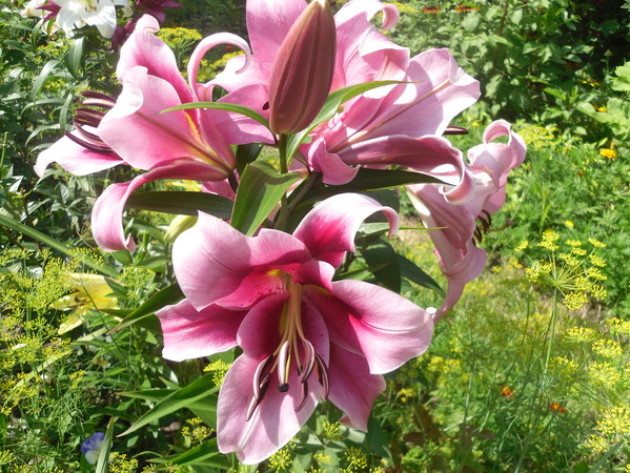
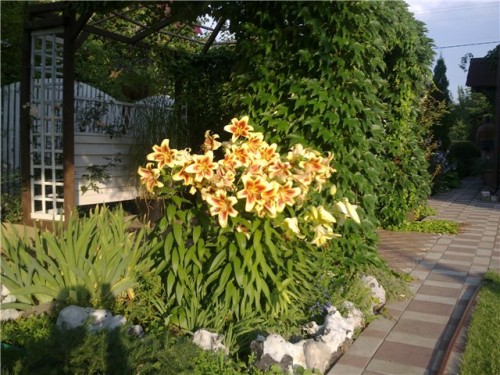

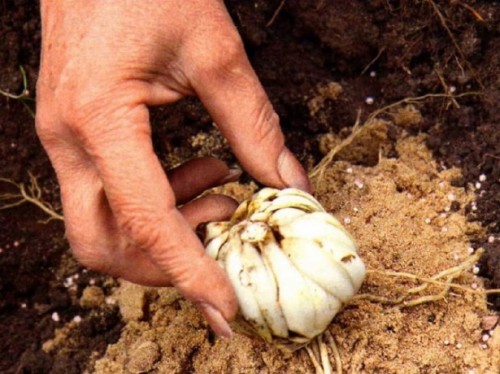
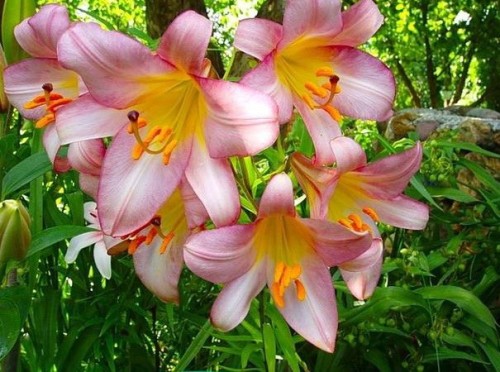
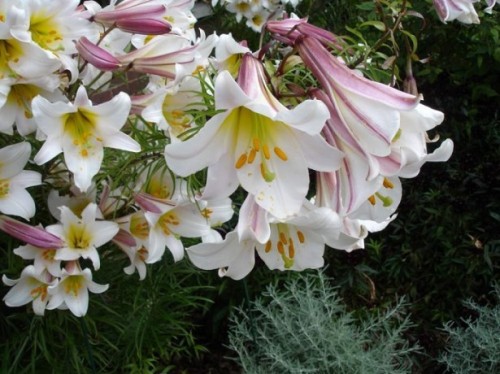
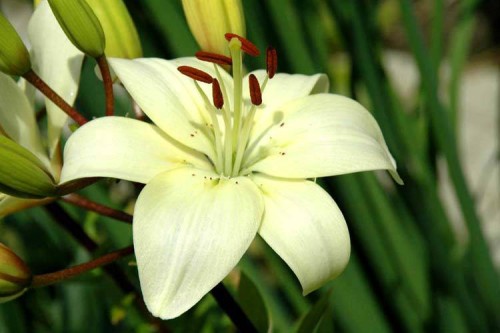
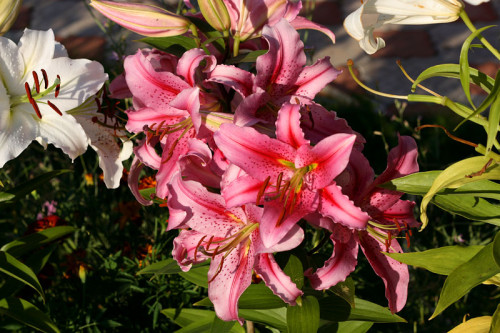
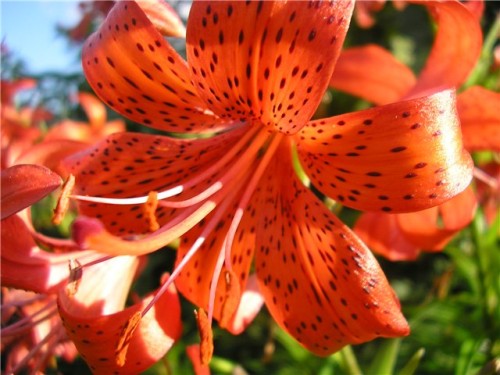
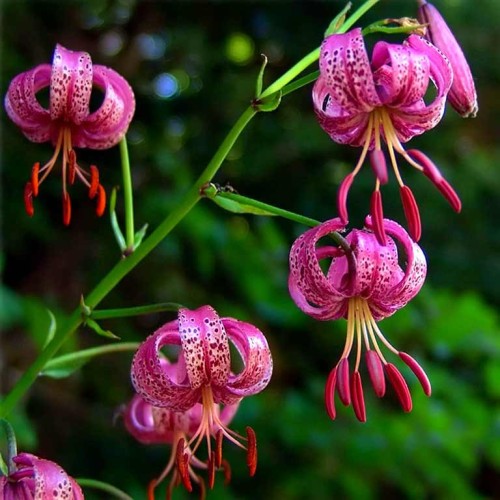
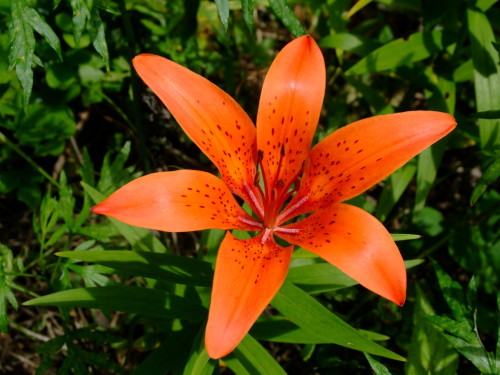












 Start a discussion ...
Start a discussion ...